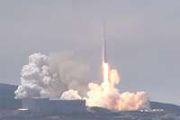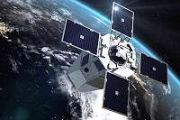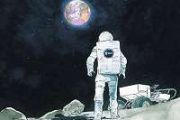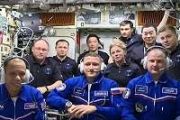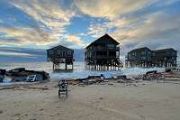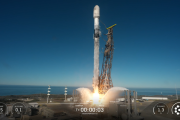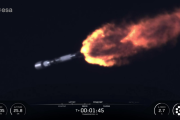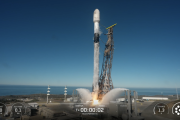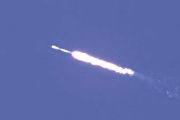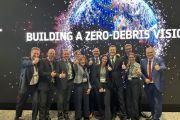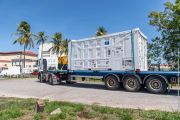
Copernical Team
New Venus observation mission - World's first long-term planetary cubesat study by Korea's Institute for Basic Science and NanoAvionics
 Kongsberg NanoAvionics (NanoAvionics), a leading small satellite bus manufacturer and mission integrator, has been selected by the Institute for Basic Science (IBS) in South Korea to build the first CubeSat for the world's first long-term planetary science campaign which will use a series of CubeSats to monitor Venus from low Earth orbit.
This long-term Venus observation initiative, the CL
Kongsberg NanoAvionics (NanoAvionics), a leading small satellite bus manufacturer and mission integrator, has been selected by the Institute for Basic Science (IBS) in South Korea to build the first CubeSat for the world's first long-term planetary science campaign which will use a series of CubeSats to monitor Venus from low Earth orbit.
This long-term Venus observation initiative, the CL Space pebbles and rocks play pivotal role in giant planet's formation
 Scientists analysing an ultra-hot giant planet believe it was formed by absorbing lightweight gases like methane evaporating from tiny space pebbles, whilst being bombarded with large rocky objects.
Using the James Webb Space Telescope (JWST) to explore the atmosphere of WASP-121b, researchers successfully detected water (H2O), carbon monoxide (CO), and silicon monoxide (SiO) in the side f
Scientists analysing an ultra-hot giant planet believe it was formed by absorbing lightweight gases like methane evaporating from tiny space pebbles, whilst being bombarded with large rocky objects.
Using the James Webb Space Telescope (JWST) to explore the atmosphere of WASP-121b, researchers successfully detected water (H2O), carbon monoxide (CO), and silicon monoxide (SiO) in the side f Meet Smile
 Video:
00:02:27
An animation showing ESA’s Smile mission watching on as the Sun’s solar wind interacts with Earth’s magnetic field.
Video:
00:02:27
An animation showing ESA’s Smile mission watching on as the Sun’s solar wind interacts with Earth’s magnetic field. Missions to Mars with the Starship could only take three months
This request seems a bit unusual, so we need to confirm that you're human. Please press and hold the button until it turns completely green. Thank you for your cooperation!
Press and hold the button
If you believe this is an error, please contact our support team.
185.132.36.159 : eea91983-5115-49ea-8188-0312df62
Mount Etna erupts
 Image:
The Copernicus Sentinel-2 mission has captured a dramatic image of Mount Etna erupting on 2 June 2025 when a massive plume of ash, gas and rock suddenly burst from Europe's largest active volcano.
Image:
The Copernicus Sentinel-2 mission has captured a dramatic image of Mount Etna erupting on 2 June 2025 when a massive plume of ash, gas and rock suddenly burst from Europe's largest active volcano. ESA supports Moon mission carrying first European rover

Japanese lunar exploration company ispace will attempt to land its RESILIENCE spacecraft on the Moon no earlier than 5 June (CEST) 2025.
The European Space Agency’s (ESA) global network of ground stations is facilitating communication between the spacecraft and ispace mission control.
Click here to watch the ispace landing livestream in English.
China Adds Shijian 26 Satellite to Its Growing Remote-Sensing Fleet
 China launched its 33rd rocket mission of the year on Thursday, successfully placing a new remote-sensing satellite into orbit, China Aerospace Science and Technology Corp. announced. A Long March 4B carrier rocket lifted off from the Jiuquan Satellite Launch Center at 12:12 pm, carrying the Shijian 26 satellite to its preset sun-synchronous orbit at an altitude of 700 kilometers.
Jointly
China launched its 33rd rocket mission of the year on Thursday, successfully placing a new remote-sensing satellite into orbit, China Aerospace Science and Technology Corp. announced. A Long March 4B carrier rocket lifted off from the Jiuquan Satellite Launch Center at 12:12 pm, carrying the Shijian 26 satellite to its preset sun-synchronous orbit at an altitude of 700 kilometers.
Jointly Japan's dense GNSS network captures unprecedented 3D sound wave patterns after Noto Peninsula quake
 Earthquakes generate ripple effects in the Earth's upper atmosphere, which can disrupt essential satellite-based communications and navigation systems. A team at Nagoya University, in collaboration with others, has now used Japan's extensive GNSS receiver network to produce the first-ever 3D images of atmospheric disturbances caused by the 2024 Noto Peninsula Earthquake. Their findings, publishe
Earthquakes generate ripple effects in the Earth's upper atmosphere, which can disrupt essential satellite-based communications and navigation systems. A team at Nagoya University, in collaboration with others, has now used Japan's extensive GNSS receiver network to produce the first-ever 3D images of atmospheric disturbances caused by the 2024 Noto Peninsula Earthquake. Their findings, publishe Milky Way may not be destroyed in galactic smash-up after all
 The Milky Way may not have a catastrophic collision with another huge galaxy as has been predicted, computer simulations revealed Monday, giving our home galaxy a coin-flip chance of avoiding destruction.
But don't worry either way: no galactic smash-up is expected for billions of years, long after our ageing Sun will have burnt away all life on Earth.
The Milky Way and the even-larger g
The Milky Way may not have a catastrophic collision with another huge galaxy as has been predicted, computer simulations revealed Monday, giving our home galaxy a coin-flip chance of avoiding destruction.
But don't worry either way: no galactic smash-up is expected for billions of years, long after our ageing Sun will have burnt away all life on Earth.
The Milky Way and the even-larger g 
 Image:
Mars star
Image:
Mars star 
